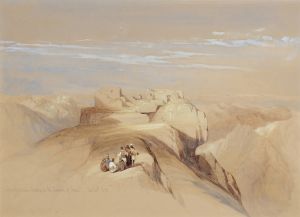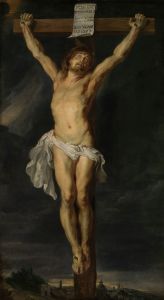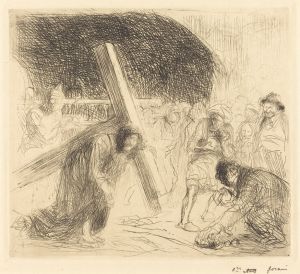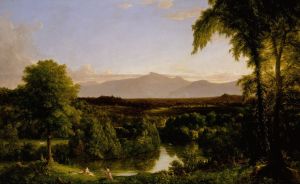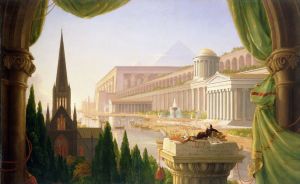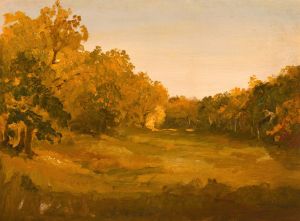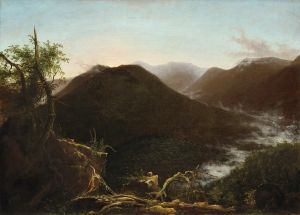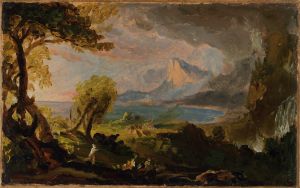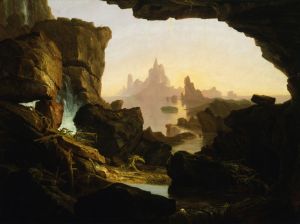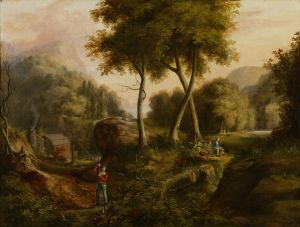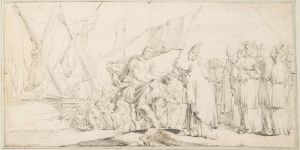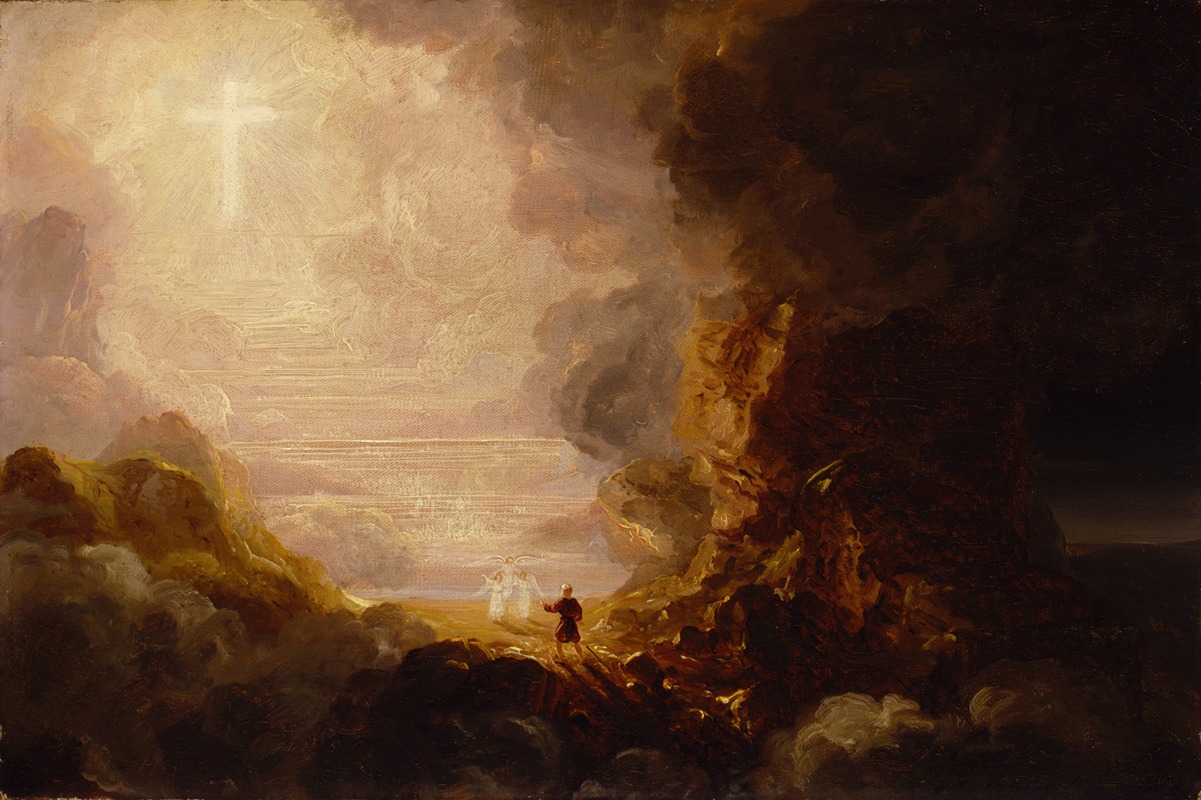
The Pilgrim of the Cross at the End of His Journey
A hand-painted replica of Thomas Cole’s masterpiece The Pilgrim of the Cross at the End of His Journey, meticulously crafted by professional artists to capture the true essence of the original. Each piece is created with museum-quality canvas and rare mineral pigments, carefully painted by experienced artists with delicate brushstrokes and rich, layered colors to perfectly recreate the texture of the original artwork. Unlike machine-printed reproductions, this hand-painted version brings the painting to life, infused with the artist’s emotions and skill in every stroke. Whether for personal collection or home decoration, it instantly elevates the artistic atmosphere of any space.
"The Pilgrim of the Cross at the End of His Journey" is a painting by the American artist Thomas Cole, a prominent figure in the Hudson River School, a 19th-century art movement known for its focus on romantic landscapes and themes of nature, morality, and spirituality. This painting is part of Cole's lesser-known works and reflects his interest in allegorical and religious themes, which were recurrent in his artistic career.
The painting depicts a pilgrim, symbolizing a devout Christian, who has reached the end of his spiritual journey. The central figure is shown kneeling before a radiant cross, which is illuminated by divine light. The setting is a dramatic and idealized landscape, featuring rugged cliffs, a serene body of water, and a celestial glow that suggests the presence of the divine. The composition emphasizes the pilgrim's humility and devotion, as well as the ultimate reward of faith and perseverance.
Thomas Cole often used his art to explore moral and spiritual questions, and this painting is no exception. It reflects his belief in the transient nature of earthly life and the eternal significance of spiritual salvation. The work is imbued with a sense of awe and reverence, characteristic of Cole's approach to religious and allegorical subjects.
The exact date of the painting's creation is not definitively documented, but it is consistent with Cole's broader body of work, which often combined naturalistic detail with symbolic and narrative elements. The painting is thought to have been influenced by Cole's personal religious convictions and his exposure to European art and culture during his travels.
As of now, the painting is not as widely recognized or studied as some of Cole's other works, such as "The Course of Empire" series or "The Oxbow." However, it remains an important example of his exploration of spiritual themes and his ability to convey profound ideas through landscape painting.
Further details about the painting's provenance, current location, or reception are limited in available historical records.






